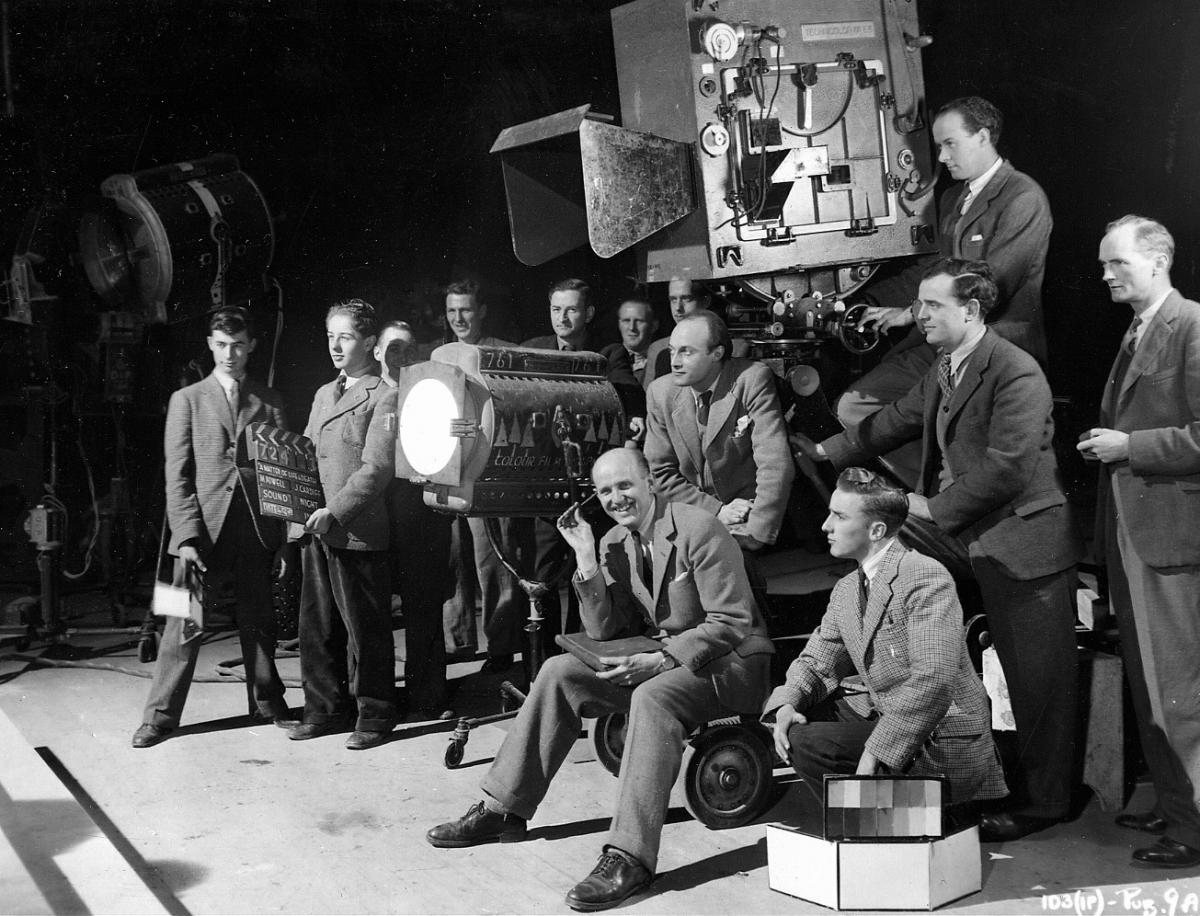
A British wartime aviator cheats death and must argue for his life before a celestial court after someone is sent down to Earth to retrieve him. Only in the meantime, something unexpected happens: love.
“Where were you born?”
“Boston.”
“Massachusetts?”
“Yes.”
“That’s a place to be born, history was made there. Are you in love with anybody? No, no don’t answer that.”
“I could love a man like you, Peter.”
“I love you, June. You’re life and I’m leaving you.”
Peter and June over the radio in A Matter of Life and Death
“Had you harked you would have heard the herald angels singing an appropriate paean of joy over a wonderful new British picture, Stairway to Heaven [A Matter of Life and Death], which came to the Park Avenue Theatre yesterday. And if you will listen now to this reviewer you will hear that the delicate charm, the adult humor, and visual virtuosity of this Michael Powell-Emeric Pressburger film render it indisputably the best of a batch of Christmas shows.”
Bosley Crowther1
“The most seductive element in the film’s magical relay between heaven and Earth is its treatment of colour. Filming was delayed for months due to shortage of colour film stock and cameras. The Archers’ established wartime cinematographer Erwin Hillier refused to share a credit with Jack Cardiff, the young Technicolor technician Powell hired for the colour sequences, and so the whole movie was given to Cardiff. He had assumed that Earth would be in black and white, the other world in colour–The Wizard of Oz (1939, Victor Fleming) supplying the model. But Powell and Pressburger wanted the reverse. Their real world is made of golden light, pink roses, blue skies and June’s scarlet lipstick.”
Brian Dillon2

“As the years went by, whenever I aw the logo of The Archers appear on the screen, I knew I was in for something unique, a very special kind of experience. I don't think any other logo would fill me with such expectation of fantasy and wonder – not so much fantasy, but magic, real film magic. [...] I always felt that the most successful experimental filmmakers in the world were Michael and Emeric, because of the number of films they managed to make over fifteen years and the level of their work. They were the only independent filmmakers who managed to work within the system and still get away with making truly exerimental films.”
Martin Scorsese3
“A Matter of Life and Death has been interpreted as a covert attack on the socialist vision of Utopia, satirized in heaven’s bureaucracy, which Peter, ‘the uncommon man’, is determined to escape at all costs. There may be some basis for this in Powell’s contemporary call for an apolitical stance: ‘Perhaps now that more writers are becoming producers and directors, they will turn their energies from politics and union activities to the creation of a new form of storytelling.’ But, as John Ellis argued in a lenghty analysis of the film, to separate form from content in traditional literary terms is to ignore what is most subversive of tradition in this remarkable work: all its imagery and debate focus on the process of representation itself.”
Ian Christie4
“But we’ll have much more to say later, when we've got Christmas out of our hair. Till then, take this recommendation: see Stairway to Heaven [A Matter of Life and Death]. It’s a delight!”
Bosley Crowther5

- 1Bosley Crowther, “Stairway to Heaven,” New York Times, 26 December 1946.
- 2Brian Dillon, “War, love and weirdness: A Matter of Life and Death – 70 years on,” The Guardian, 4 November 2016.
- 3Martin Scorsese, “Foreword,” in Ian Christie, Arrows of Desire. The Films of Michael Powell and Emeric Pressburger (London: Faber and Faber Limited, 1994).
- 4Ian Christie, Arrows of Desire. The Films of Michael Powell and Emeric Pressburger (London: Faber and Faber Limited, 1994).
- 5Bosley Crowther, “Stairway to Heaven,” New York Times, 26 December 1946.

